Learning Piano
Mastering Piano Sheet Music and Finger Dynamics
Mastering Piano Sheet Music and Finger Dynamics
Unlocking the ability to read piano sheet music transforms playing the piano into an enjoyable and soothing experience. However, interpreting piano music can be complex since it involves concurrently reading two musical lines. It’s essential to recognize that the upper line represents the right hand (treble clef) and the lower line denotes the left hand (bass clef).
Interpreting the Treble Clef 
- Identify the Clef: Confirm if the upper line is in treble clef. While rare, bass clef can appear for the right hand in certain compositions that require hand crossover.
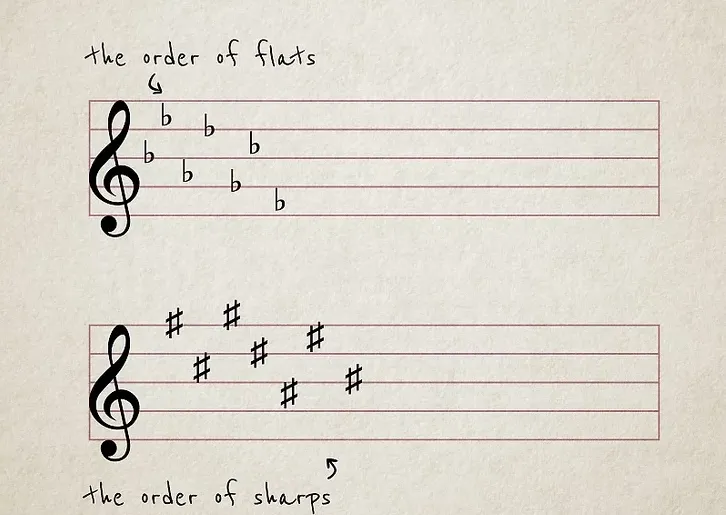
- Key Signature Mastery: Located immediately after the treble clef, the key signature contains flats and sharps affecting note pitches. Flats follow the sequence B – E – A – D – G – C – F, while sharps reverse this order: F – C – G – D – A – E – B.
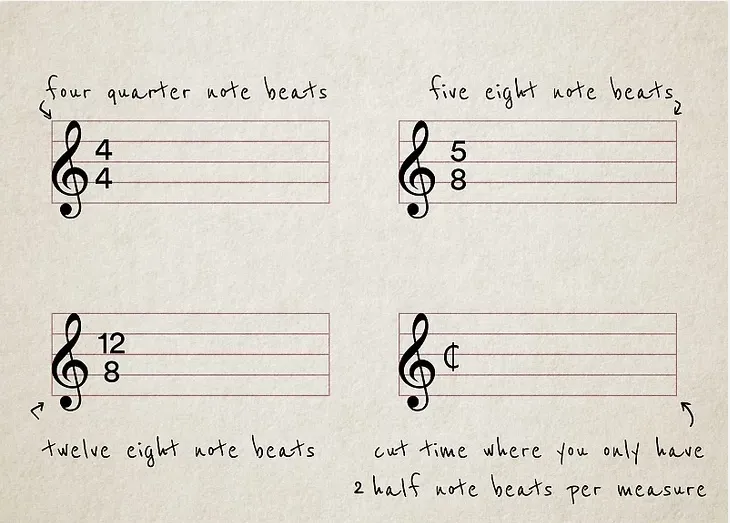
- Understanding Time Signatures: The time signature, represented by two numbers at the line’s start, dictates the rhythm. For example, 4/4 signifies four quarter-note beats per measure, whereas 12/8 means twelve eighth-note beats.
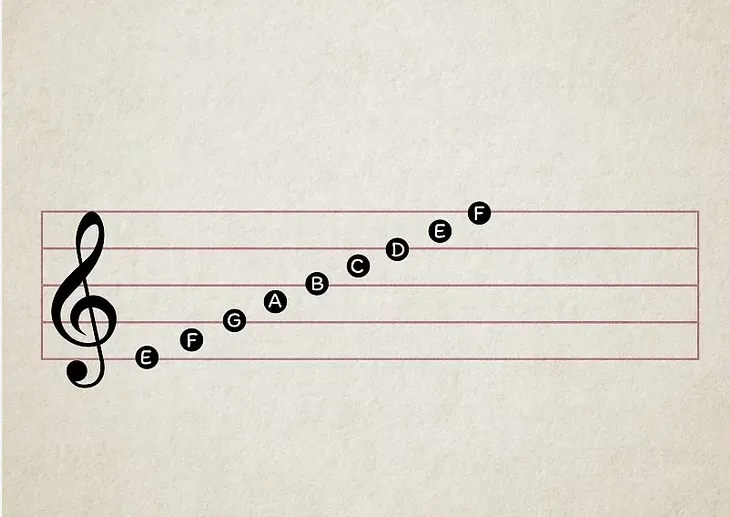
- Note Placement on Lines and Spaces: The five lines from bottom to top represent E – G – B – D – F, with the spaces in between spelling out F – A – C – E.
Navigating the Bass Clef 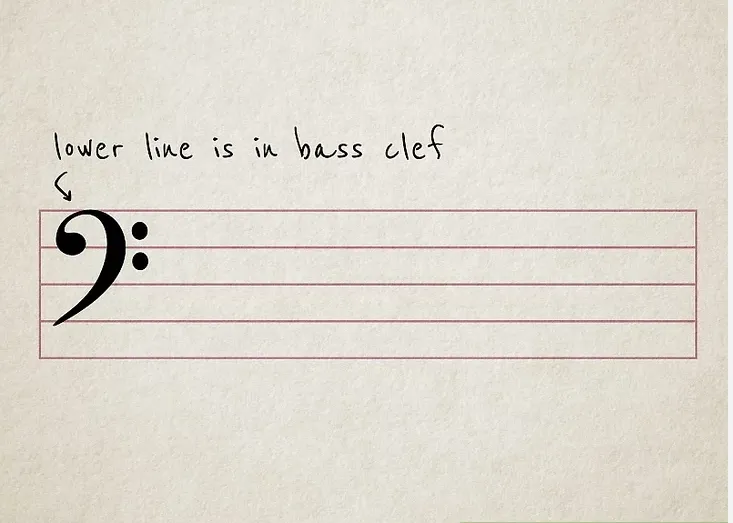
- Clef Identification for the Lower Line: The bass clef usually marks the left hand’s notation. If it’s in treble clef, refer to the previous instructions for rhythms and signatures.
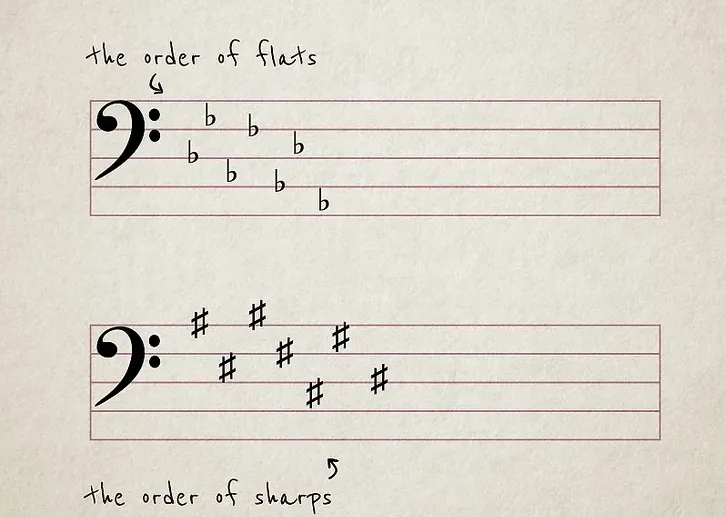
- Key Signature Knowledge: The bass clef’s key signature should match the treble clef, outlining which notes are sharp or flat.
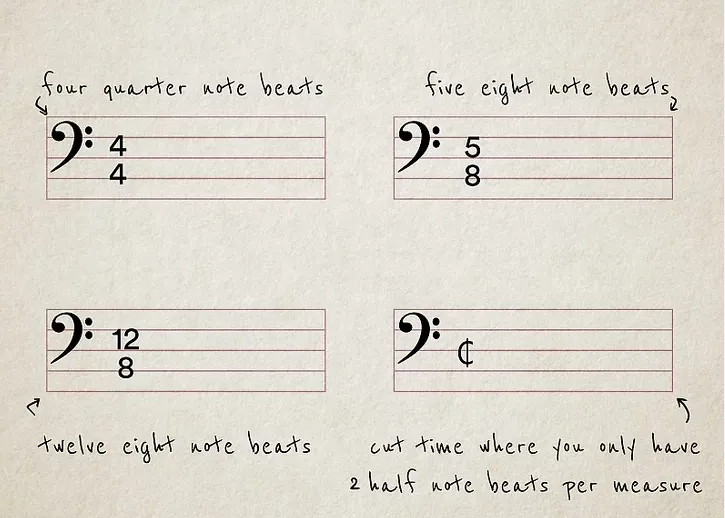
- Time Signature Consistency: Like the treble clef, the bass clef uses the same time signature method to organize rhythm.
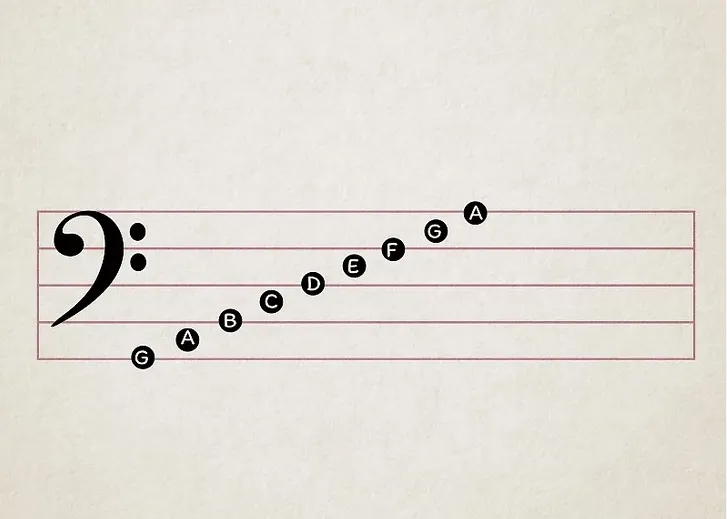
- Bass Clef Notes: The bass clef lines represent G – B – D – F – A, with spaces for A – C – E – G.
Integrating Knowledge 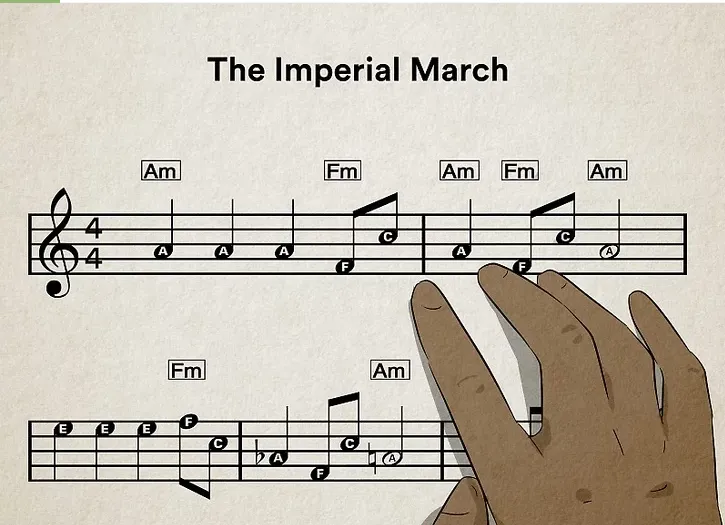
- Note and Chord Recognition: Start by identifying individual notes versus chords, where multiple notes stack and play simultaneously.

- Rhythmic Reading: Familiarize yourself with various note types and their corresponding rhythms.
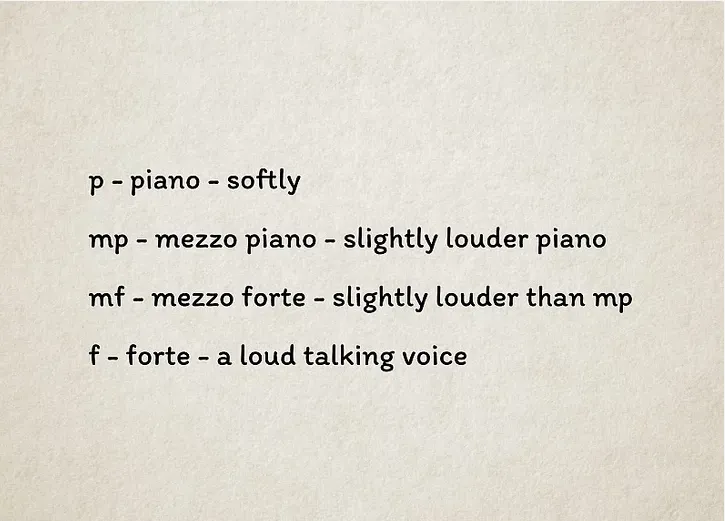
- Dynamics Decoding: Dynamics, usually placed between the staves, indicate the music’s volume, ranging from soft (piano, p) to loud (forte, f).
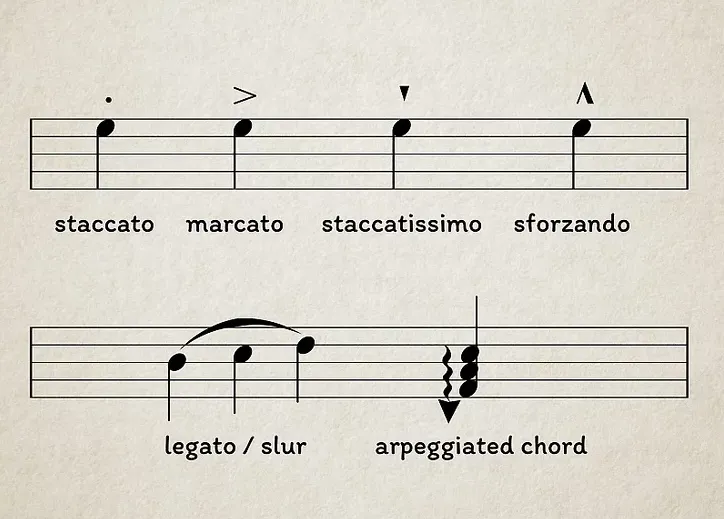
- Articulation Understanding: Learn different articulations like staccato (short), legato (smooth), and accents (forceful), which influence note expression.
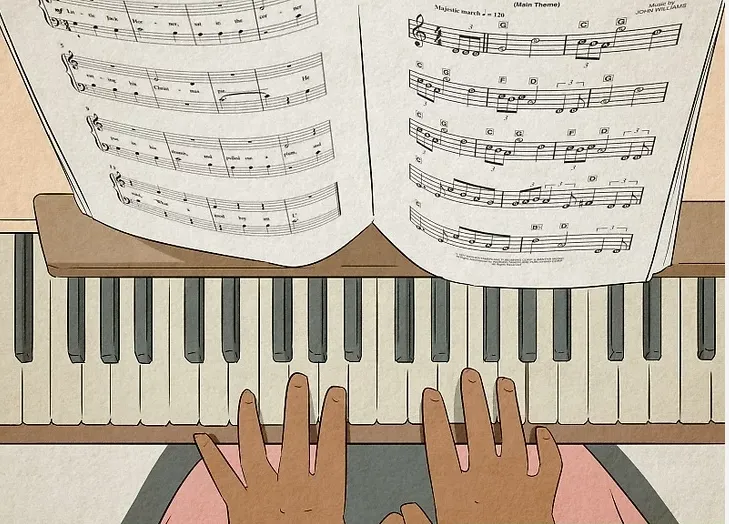
- Combined Practice: The final step involves synchronizing both hands. A useful tip is that notes and chords align across the right and left hands, facilitating coordinated play.
With these guidelines, navigating piano sheet music becomes less daunting, paving the way for a rewarding musical journey.
